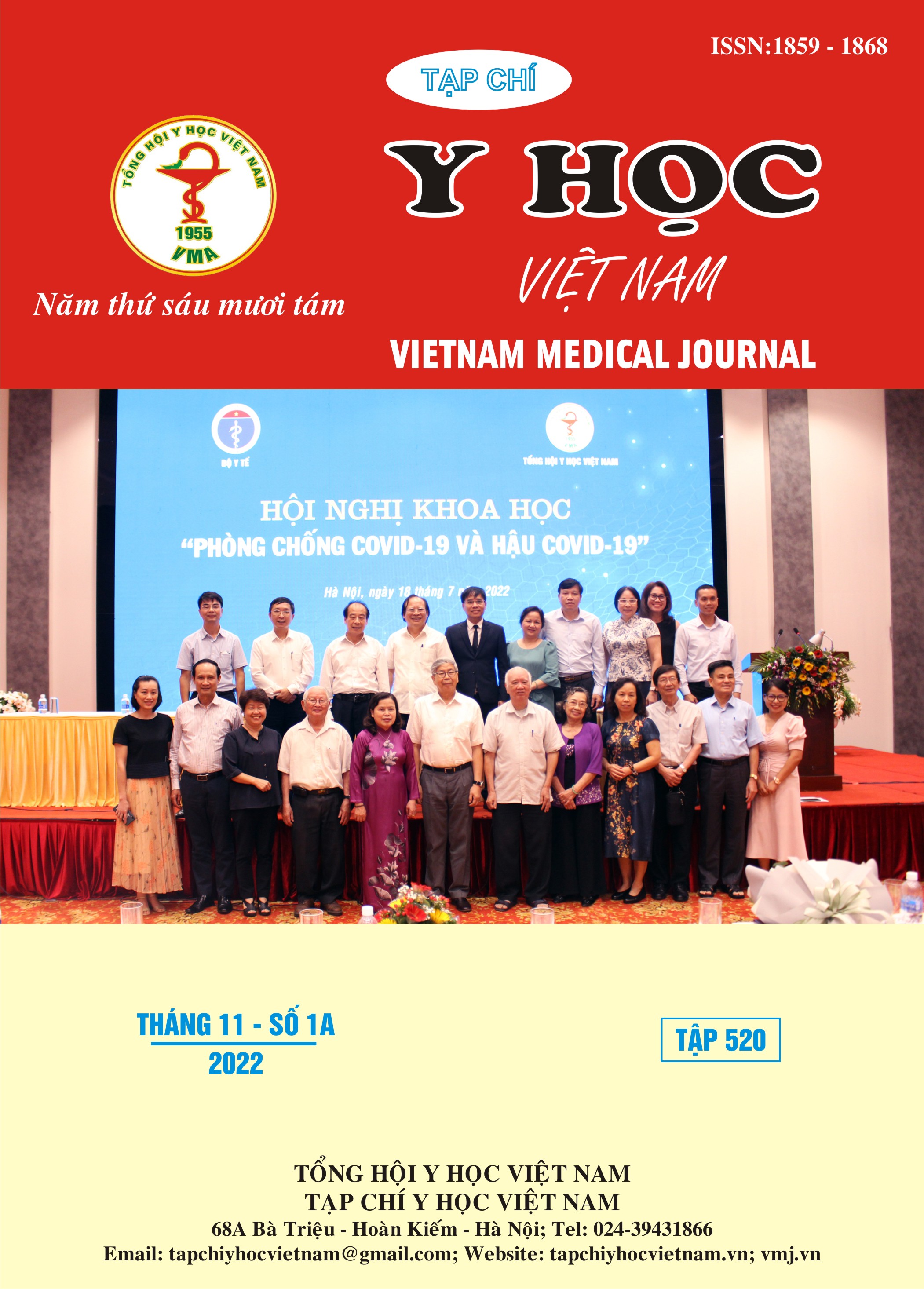SOME FACTORS RELATED TO AGITATION IN IN-PATIENTS WITH PARANOID SCHIZOPHRENIA AT THE NATIONAL INSTITUTE OF MENTAL HEALTH
Main Article Content
Abstract
Background: Agitation is a common manifestation in patients with schizophrenia. Early and accurate assessment of psychomotor agitation is essential to ensure prompt intervention by health professionals to improve the patient's condition, protect healthcare workers, and facilitate patient care. future management. Objectives: Evaluation of some factors related to agitation in in-patients with paranoid schizophrenia at the National Institute of Mental Health. Subjects and research methods: A cross-sectional descriptive study of 91 in-patients with paranoid schizophrenia who were treated at the National Institute of Mental Health, Bach Mai Hospital from August 2021 to May 2022. Results: 52.7% of patients continued to study after graduating from high school. unmarried patients accounted for 59.3%. The mean age of onset was 25.56 ± 8.34; at least 15 years old. Patients with a history of violent aggression had a 26.54 times higher risk of agitation, and a history of psychoactive substance abuse had a 3.67 times higher risk of agitation. Patients who are not voluntarily admitted to the hospital are 53.18 times more likely to be agitated than patients who are voluntarily admitted to the hospital. Patients with commanding and inciting hallucinations were 11.21 and 2.79 times more likely to be agitated than patients without these hallucinations. Conclusion: No association was found between the occurrence of agitation with factors such as age, gender, drug adherence, delusions of being followed, and being harmed. There is an association between the presence of agitation with a history of aggressive behavior, violence, history of substance abuse, form of forced hospitalization, hallucinatory hallucinations, command hallucinations
Article Details
Keywords
paranoid schizophrenia, agitation
References
2. Pompili M, Ducci G, Galluzzo A, Rosso G, Palumbo C, De Berardis D. The Management of Psychomotor Agitation Associated with Schizophrenia or Bipolar Disorder: A Brief Review. Int J Environ Res Public Health. 2021;18(8):4368. doi:10.3390/ijerph18084368.
3. Zeller SL, Rhoades RW. Systematic reviews of assessment measures and pharmacologic treatments for agitation. Clin Ther. 2010;32(3): 403-425. doi:10.1016/j.clinthera.2010.03.006.
4. Đinh Việt Hùng. “Đặc điểm rối loạn chú ý, trí nhớ và nhận thức ở bệnh nhân tâm thần phân liệt thể paranoid”, tạp chí y học Việt Nam, tập 504 – tháng 7 - số 2 - 2021, 16-20.
5. Bùi Phương Thảo. “Nghiên cứu biến đổi nồng độ Dopamin huyết tương ở bệnh nhân tâm thần phân liệt điều trị bằng thuốc an thần kinh và sốc điện”, Luận văn thạc sĩ y học, Học viện Quân y, 2021.
6. Mi W, Zhang S, Liu Q, et al. “Prevalence and risk factors of agitation in newly hospitalized schizophrenia patients in China: An observational survey”. Psychiatry Res. 2017;253:401-406. doi:10.1016/j.psychres.2017.02.065.
7. Nguyễn Quang Ngọc Linh. “Đặc điểm lâm sàng rối loạn hành vi ở bệnh nhân tâm thần phân liệt thể paranoid”, Luận văn thạc sĩ y học, Đại học y Hà Nội, 2018.
8. Araya T, Ebnemelek E, Getachew R. “Prevalence and Associated Factors of Aggressive Behavior among Patients with Schizophrenia at Ayder Comprehensive Specialized Hospital, Ethiopia”. BioMed Res Int. 2020;2020:7571939. doi:10.1155/2020/7571939.


